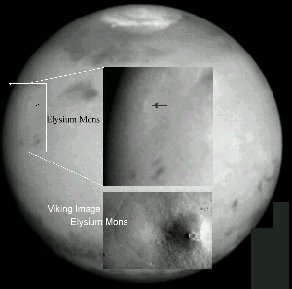One of the biggest and most talked about events and topics in the Astronomy and Space exploration world has been, and remains, the Mars Curiosity rover landing. A breakthrough in unmanned exploration as well as a historic moment, the rover will allow humans to explore, explain and examine the Red Planet in ways many thought impossible.
However, there are many facts about Mars that we’ve known for years using the technology we had available previously that many people simply don’t know about. We’ve collected a bunch of these amazing facts and figures and put them all together here for you to look at.
- Mars has been nicknamed the ‘Red Planet’ due to the colour of its surface. The soil like material is packed with iron-oxide; this material gives Mars its red pigment. The Egyptians named Mars ‘the red one’.
- Recently, Mars was found to have an impact crater that is 3-4 times bigger than any found on earth, spanning 4,000km and being 7km deep; our Grand Canyon on Earth is 446km long and 2 km deep. The canyon on Mars is longer than Europe and it is also the largest in our solar system!
- Mars takes more time to orbit the sun than Earth due to the fact that it is further away. Also, Mars has almost double the amount of days in one year than Earth does; Mars has a 687-day year, whereas, Earth has a 365-day year. One day on Mars is also longer than one day on Earth by about 30 minutes.
- Mars is the most watched and studied planet in our solar system, other than Earth of course. Scientists have sent rovers to the Red Planet to discover new things and a variety of technological applications have been used in order to make the rover landing successful, for example multivariate data analysis is one application used. Multivariate data analysis contributes to Scientists being able to examine aspects of Mars, such as rock compositions.
- Size wise, Mars is approximately half the size of our planet Earth. Its circumference is 21,344km, whereas our planet offers a once round measurement of 40,075km around the equator. Gravity on Mars is around 40% less than that felt here on our planet.
- A spacecraft sent to Mars by NASA discovered water beneath its surface and scientists believe that the water found is enough to fill up Lake Michigan twice.
- In some ways Mars is very similar to Earth, for example they both have a tilted axis. The tilted axis means that both planets have similar seasons, however, the seasons on the Red Planet do last twice as long because it is further away from the sun.
- Mars has a total of two moons, Phobos and Deimos. These moons are the smallest in the solar system and it is actually believed that eventually, Phobos will crash into Mars. However, no one has really agreed on when this is going to happen.
Space is something that interests many people around the world and when you think about it, it really is mind-boggling. It is incredible what discoveries scientists have been able to make over the years due to the technology available. It is amazing how much we can know about something that is so far away from us. The history and the facts of the Red Planet are truly fascinating.
About the Author: Candy Wright loves anything lifestyle related, including hobbies like Astronomy. One tool recommended to use when studying astronomy is multivariate date anyalisis; this software is produced by companies such as CAMO.



